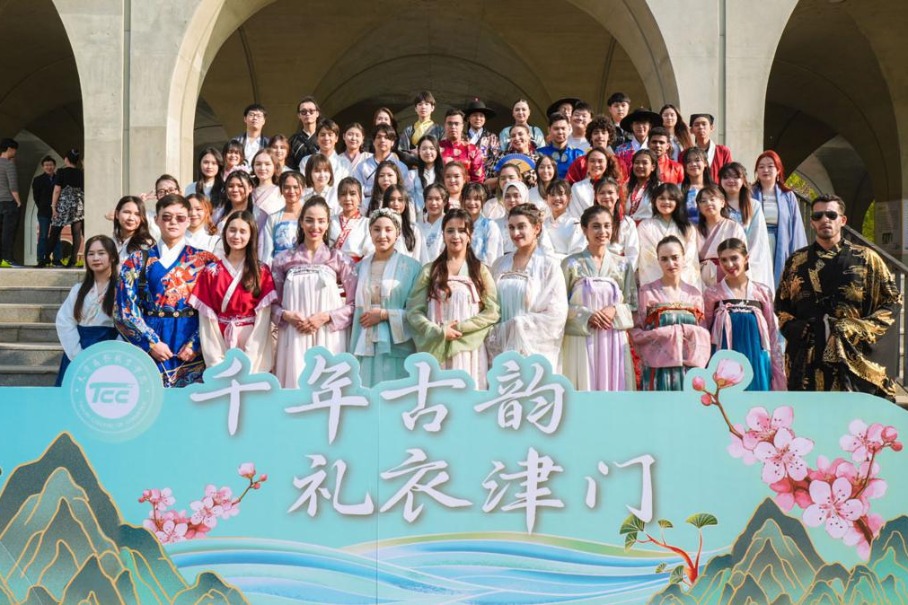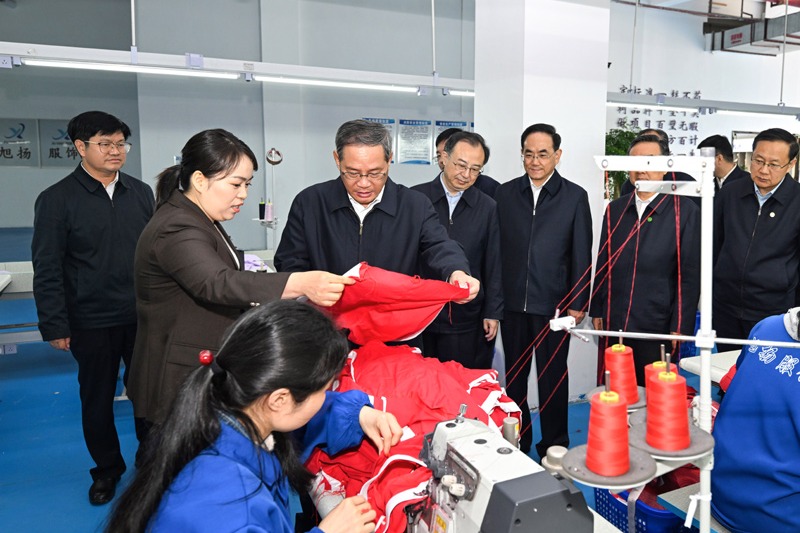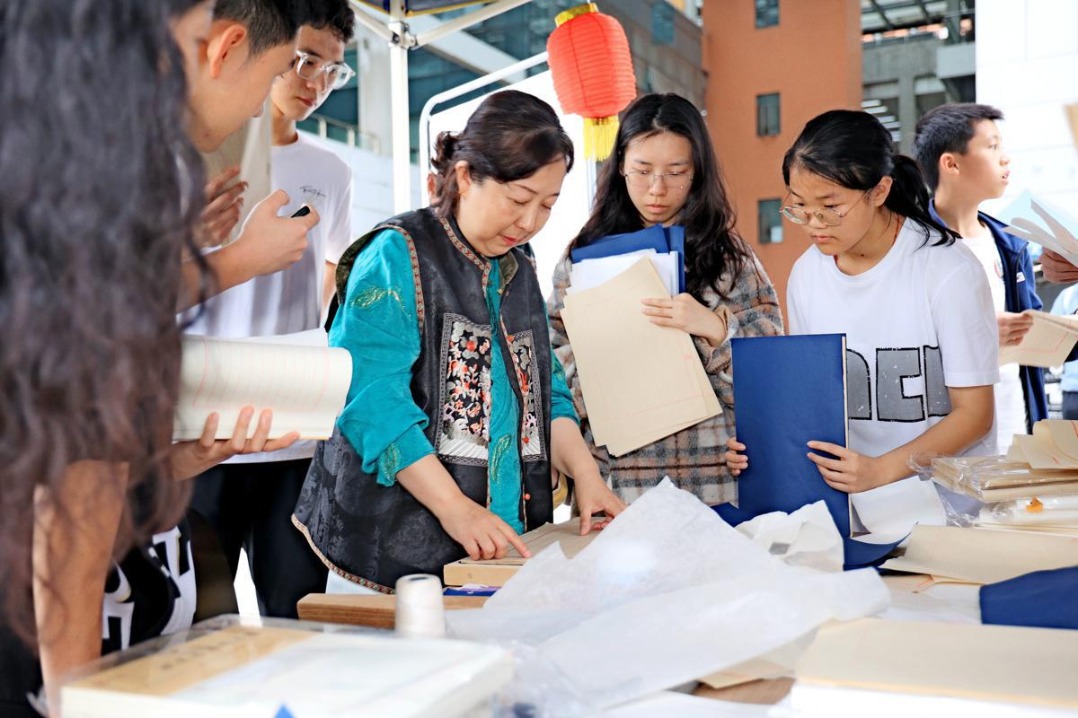China has played by all the WTO rules

The year 2018 has not been an easy one for China and the US on the economic front. Trade tensions between the two nations seem to be getting worse.
Following its tariff list on Chinese exports worth $200 billion, the US threatened to impose tariffs on all $500 billion of imported Chinese goods. The US also has accused China of breaching World Trade Organization (WTO) rules and used it as a pretext to take unilateral measures against China.
In fact, from its 40 years' experience of reform and opening-up, China has learned that only with its doors open, and in keeping with times and global trends, can it develop itself while sharing opportunities and benefits with other countries and their peoples.
WTO accession is China's strategic decision. Since acceding to the WTO in 2001, China has been a strong advocate for free trade. It has comprehensively fulfilled its commitments to the WTO, substantially opened its markets to the world and delivered mutually beneficial and win-win outcomes on a wider scale.
Through these efforts, China has become an active participant, strong supporter and major contributor to the multilateral trading system.
China has fulfilled its WTO commitments, having eliminated import quotas, import licenses, specific import tendering requirements and other non-tariff measures by 2005. It had honored all of its commitments on trade in services by 2007 by opening up nearly 120 subsectors to various degrees, more than the 100 subsectors it had committed to.
By 2010, China had fulfilled all of its tariff-reduction commitments, reducing the average tariff level from 15.3 percent in 2001 to 9.8 percent. The average tariff rate of agricultural products was cut to 15.2 percent, about one fourth of the global average and far lower than those imposed by the WTO's developing members (56 percent) and developed members (39 percent).
Change does not happen without pain. The price of honoring commitments is exorbitant. As China slashed customs duties on automobiles in accordance with its WTO commitments, China's domestic auto industry, which had lagged developed members before China's WTO accession, took a heavy blow.
From 2001 to 2017, China's importing of passenger cars with engine displacement at 1.5-3 liters grew at an average 26.4 percent per year, the auto-trade deficit surging from $870 million to $34 billion. China's automakers and workers strove to adjust in the midst of fierce competition.
As an adherent to free trade, China has firmly upheld the multilateral trading system. It has pushed ahead trade and investment liberalization and facilitation and participated fully in the Doha Round negotiations, in which it submitted or co-sponsored more than 100 negotiation proposals. It has safeguarded the effective operation of the dispute-settlement mechanism and properly handled trade disputes with other WTO members.
China supports WTO members to solve their trade disputes within the WTO dispute-settlement mechanism. It redressed other members' violations of obligations and defended the authority of WTO rules by lodging complaints in the WTO while it actively defended the cases against China and complied with WTO rulings.
It has faithfully participated in trade policy review and attached great importance to trade policy monitoring by other WTO members. China vigorously supports the integration of developing members into the multilateral trading system and has helped six least-developed countries (LDCs) accede to the WTO through the LDCs and accessions program established by China in 2011.
It has firmly opposed unilateralism and protectionism, as demonstrated by our leaders on several international occasions such as the Belt and Road Forum for International Cooperation, the Boao Forum for Asia, and the World Economic Forum.
As a contributor to world growth and global benefits, China has lived up to its responsibilities as a major country. Accession to the WTO has boosted China's development and benefited the rest of the world.
Since 2002, China's contribution to global economic growth has approached 30 percent on average. According to WTO statistics, China's imports accounted for 10.2 percent of the world's total merchandise imported in 2017, and its exports 12.8 percent, making China a major trade partner of more than 120 countries and regions.
From 2001 to 2017, China's imports increased six fold, making it the world's second-largest goods importer. Since 2013, China has been the world's second-largest services importer as well. In 2017, outbound tourist trips made by Chinese citizens exceeded 130 million person-times, tantamount to 40 percent of the US population.
To let other countries take a ride on China's development express and share the benefits of China's growth, China proposed the Belt and Road Initiative, under which Chinese enterprises set up 75 overseas economic and trade cooperation zones in relevant countries by the end of 2017, contributed more than $1.6 billion taxes to the host countries and created 220,000 local jobs.
China also will host the China International Import Expo in November 2018, in an effort to further open its market and provide new export opportunities for the world. China receives support from the international community in its own development process and stands ready to provide more public goods to the world.
Looking forward, China will advance opening-up to a higher level and embrace economic globalization more proactively. Fulfilling its WTO commitments has never been the end point of China's opening-up. China pursues a trade strategy of mutual benefit, win-win, diversification and balanced development.
China never deliberately pursues a trade surplus in goods. At the same time, China takes an objective view toward the existing trade deficit in services. In recent years, on top of its commitments to the WTO, China has self-initiated significant reductions to import tariffs to import more high-quality, distinctive products that meet the strong demand of the Chinese people.
China will open wider to foreign investment. The newly released negative list for foreign investment in 2018 was cut to 48 from 63 items, representing China's will to further widen market access considerably.
California leads all American states in economic cooperation with China. In 2017, its exports to China reached $16.4 billion, accounting for 12.7 percent of all US exports to China. The high-tech companies in Silicon Valley almost invariably have established a footprint in China.
Despite the trade tensions between our two nations, collaboration at the subnational and corporate level has never ceased. As China moves along with opening up its market and liberalizing and facilitating trade and investment at a higher level, there will be more room for China-US cooperation. The mutually beneficial ties between California and China will grow stronger.
The author is commercial counselor at China's Consulate General in San Francisco.
- Shenzhou XVIII successfully launched
- The Shenzhou XVIII spaceship successfully launched
- Xi calls on Chongqing to write its chapter in Chinese modernization
- Shandong produce seller begs for order cancellations after pricing error
- Zhejiang woman receives lenient sentence for rooftop poppy plantation
- Lucky mistake: Lottery player wins jackpot thanks to salesperson's error





































